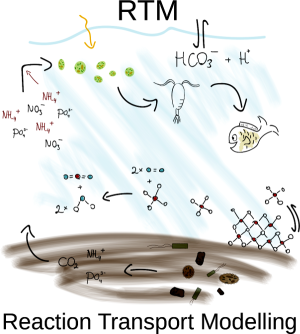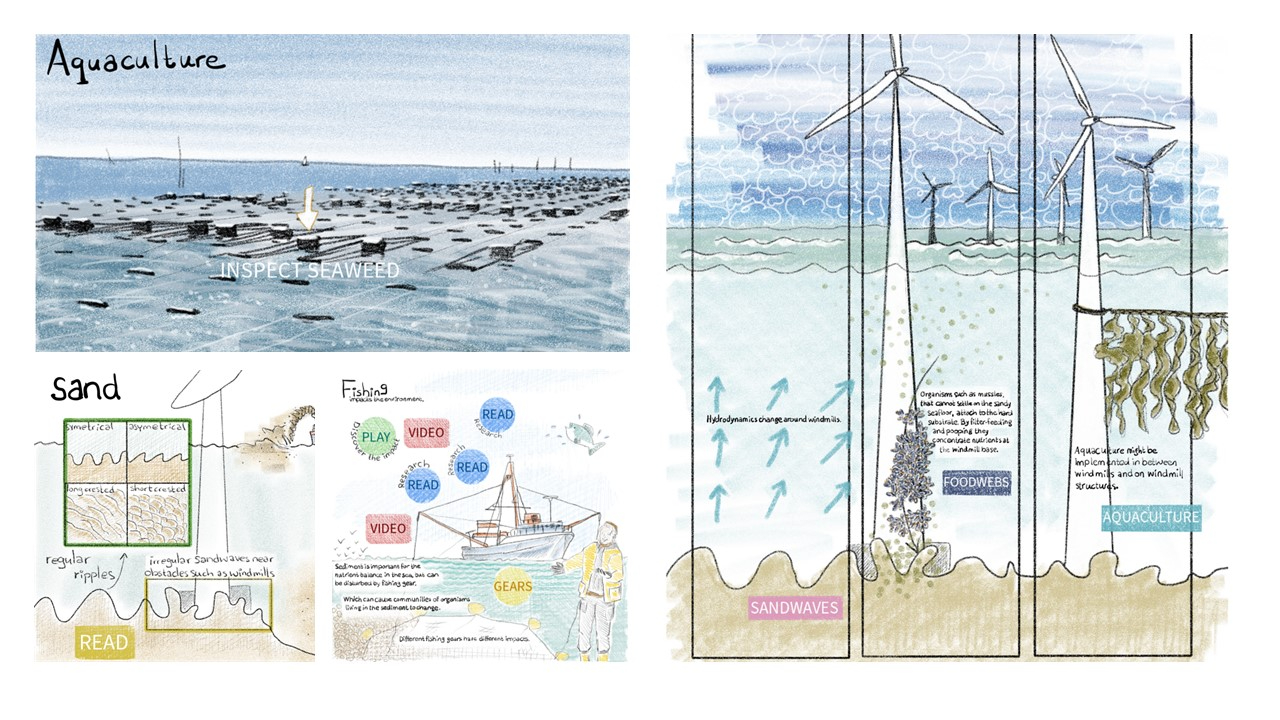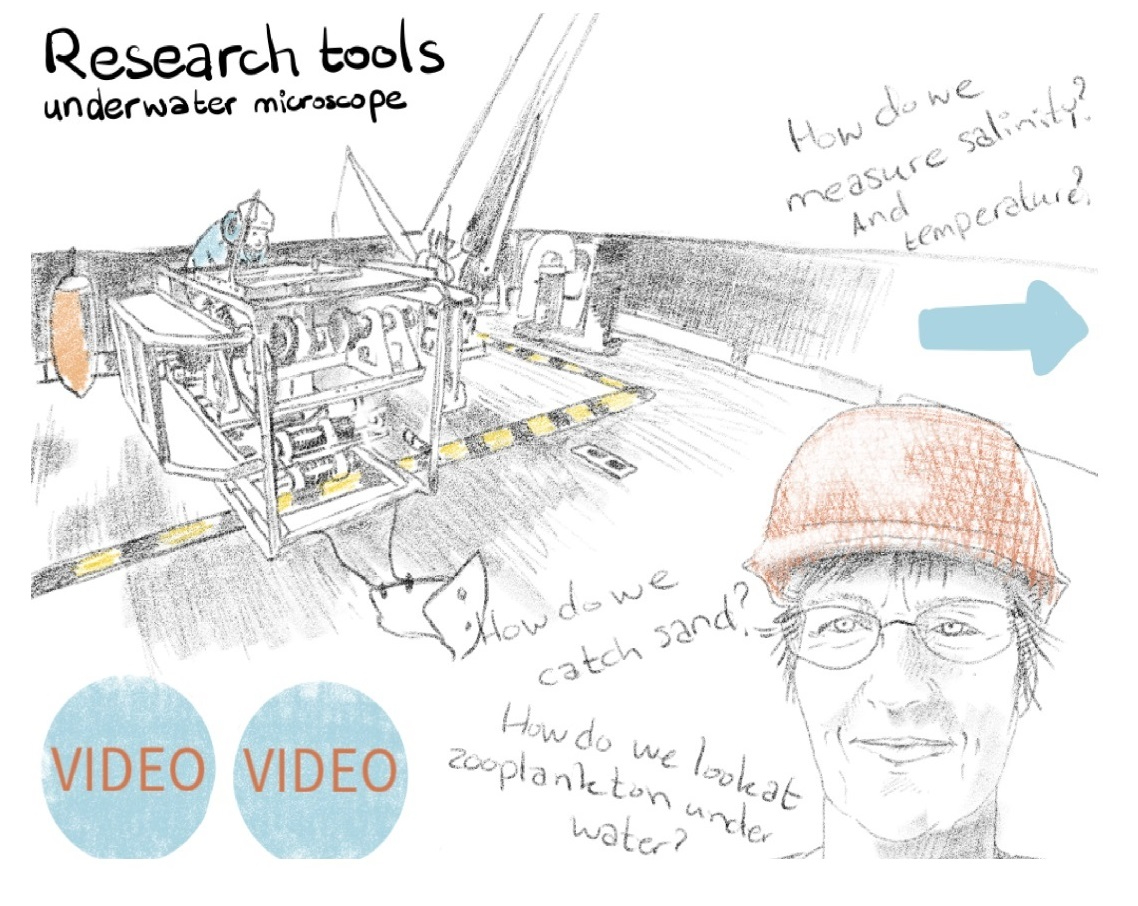Prof. Dr. Karline Soetaert
Computer science reveals the significance of field observations
After studying zoology at Ghent University, biologist Karline Soetaert gradually specialised in computer science as well. ‘Unfortunately, the value of mathematics is still underestimated! I have learnt to appreciate computer science and mathematics as the instruments that enable us to really understand the data. We can collect as much data as we want, but we can usually only understand it after it has been inserted in mathematical models.’
Pulse fishing
‘One of the fields that I recently performed calculations on was the effect of fishing that disrupts the seabed. For some time now, Dutch fishermen have been allowed to fish using electrical fishing gear, the so-called pulse fishing. We examined the effects of the various types of fishing gear on the ploughing of the seabed and the release of carbon, nitrogen and phosphorus from the sediment. The analyses of field observations reveal that fishing gear that moves just above the seabed and that uses electrodes to startle the fish is somewhat less harmful to the seabed than traditional fishing gear with heavy tickler chains.'
Wind farms and seaweed farms
‘We also perform calculations on the effects of mussel farming or seaweed farms in the Eastern Scheldt. Both have an effect on the spread of nutrients in the water. In combination with hydrodynamic models, geochemical and ecological models can reveal the effects of these activities on the delta ecosystem.’
‘The growing number of wind farms on the North Sea will also have an impact on the geochemistry and consequently on the biology of the sea. Mussels grow on the masts of wind turbines and filter particles from the water. Additionally, the functioning of the seabed will change due to the arrival of all those hard structures.’
From physics to ecology
‘In hydrodynamic models, we work with physical processes such as the flow of water. These models have already demonstrated their value. The next challenge is to capture ecological processes in mathematical terms that are just as reliable, so that we can also predict the effects of our interventions on the ecology in a responsible manner before we cause irreversible effects.
Read more +Research interests
I am interested in the interplay between physics, ecology, and biogeochemistry in the marine environment. I have worked on many topics, including deepsea nematodes, estuarine zooplankton, estuarine biogeochemistry, early diagenesis, benthic and pelagic foodwebs, environmental modelling, software development and differential equations. Usually there is some computational aspect involved in my work -this may be in the form of mechanistic (ecosystem) models, or some other number-crunching procedure that involves computers and programming. Indeed, my favorite working spot is behind my computer, although the occasional field work definitely has its charm!
Below you find a word cloud based on my work.

Research statement
I am a firm believer of open, transparent and reusable science, which –in my view- should include documenting the entire chain of research, from data up to the publication. This involves sharing also the raw data and the software and scripts that compute on these data.
Open science starts with open source software, so for more than 10 years, I have contributed to the open source software community, creating around 20 R-packages that are available on CRAN. To make the every-day scientific data analysis or modelling process open and reproducible, I use R with markdown – this creates documents that contain the programming codes and the output they generate (a concept known as literate programming). You can check out this website, where you can find scripts how to visualise complex multidimensional datsets in R, using one of my R-packages.
Research tools
For me, data and models are equally important tools to understand the natural environment. Whether I will rely more on one or the other depends on many things, including the discipline that I deal with. For instance, in the marine realm, physics is well represented by the (hydrodynamical) models, but in ecology, we lack the mechanistic understanding to allow prediction.
This means that, although my main expertise is in modelling, you can find me in the field as well, for instance for working on intertidal flats (in the picture below with Tom Ysebaert and Dunia Rios Yunes - thank you Tom!).
I can also be found on board of a ship or a boat, e.g. for work in Greenland (below with Ulrike Braeckman and Lorenz Meire).

You can read my blog on my Northsea cruise in 2017m if you want to know what a cruise at sea looks/feels like...
Short CV
I hold a master degree in Zoology (1983), a master in Computer Sciences (1985) and a PhD in biology (1988), all from Ghent University.
I have written in the order of 200 scientific publications, 20 software packages and 2 books. A list of my scientific output/achievements can be downloaded here.
In 2024 I was elected a member of the Academia Europaea (MAE).

Teaching
I teach environmental modelling at the University of Ghent, for the first-year master “Global Change Biology” and for the first-year master “Oceans and Lakes”. I also hold a chair in marine ecosystem modelling at the Geosciences department at Utrecht University. My teaching focusses mainly on model development, and I use both the flipped classrom concept and blended learning. Here you can find more info about my teaching principles.
The course I teach in Utrecht (Reaction Transport Modelling) is available as an R-package that can be downloaded from github; this package is called: RTM. It contains links to videos, tutorials, quizzes, and the exercises that our students need to make during the course.

Finished projects
The projects that I worked on (2016-2022) are summarised in the infographics below, and can be visited from our northsea website.

Recently started projects
Several new projects started in 2022-2023, where I am the PI; here you see a collage of them:

Science meets art
Sometimes a nice illustration draws more attention than a scientific article. To showcase our Northsea research, we created a website (https://www.northsea-research.com ) where we use illustrations, video’s, and computer games to tell about our work.

Take a virtual tour on the RV Pelagia, and admire our work during a cruise on the Northsea (follow the arrows!), or play the foodweb game (Dutch only).
Miscellaneous
My job is not my only hobby! I play the cello (learnt this as an adult), and used to play the clarinet (as a child). In 2016 I started playing the viola, and since 2022 I also play the violin.
Bach is my favorite composer, Massive Attack my favorite modern band.
I enjoy my medium-large, wild and natural garden, and like to spend time on my mountain bike – for sports and because it takes me to some wonderful places.
Linked news
Linked blogs
NIOZ publications
-
2024
Braeckman, U.; Soetaert, K.; Pasotti, F.; Quartino, M.L.; Vanreusel, A.; Saravia, L.A.; Schloss, I.R.; van Oevelen, D. (2024). Glacial melt impacts carbon flows in an Antarctic benthic food web. Front. Mar. Sci. 11: 1359597. https://dx.doi.org/10.3389/fmars.2024.1359597Chevalier, S.; Beauchard, O.; Teaca, A.; Soetaert, K.; Grégoire, M. (2024). Partial recovery of macrozoobenthos on the northwestern shelf of the Black Sea. Mar. Pollut. Bull. 207: 116857. https://dx.doi.org/10.1016/j.marpolbul.2024.116857Ghorai, B.; Tiano, J.C.; Molenaar, P.; Soetaert, K.; Keetels, G. (2024). Predicting the penetration depth and towing resistance of beam trawl fishing gears in sand. Mar. Georesour. Geotechnol. early view: 1-14. https://dx.doi.org/10.1080/1064119x.2024.2361009Rijnsdorp, A.D.; Boute, P.G.; Tiano, J.C.; de Haan, D.; Kraan, M.; Polet, H.; Schram, E.; Soetaert, M.; Steins, N.A.; Lankheet, M.J.; Soetaert, K. (2024). Electrotrawling can improve the sustainability of the bottom trawl fishery for sole: a review of the evidence. Rev. Fish Biol. Fish. 34(3): 959-993. https://dx.doi.org/10.1007/s11160-024-09867-x
- 2023
- 2022
- 2021
- 2020
- 2019
- 2018
- 2017
- 2016
- 2015
- 2014
- 2013
- 2012
- 2011